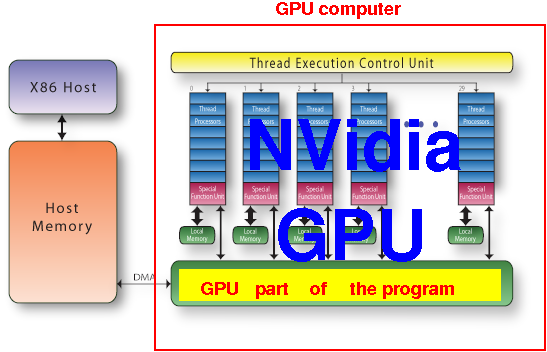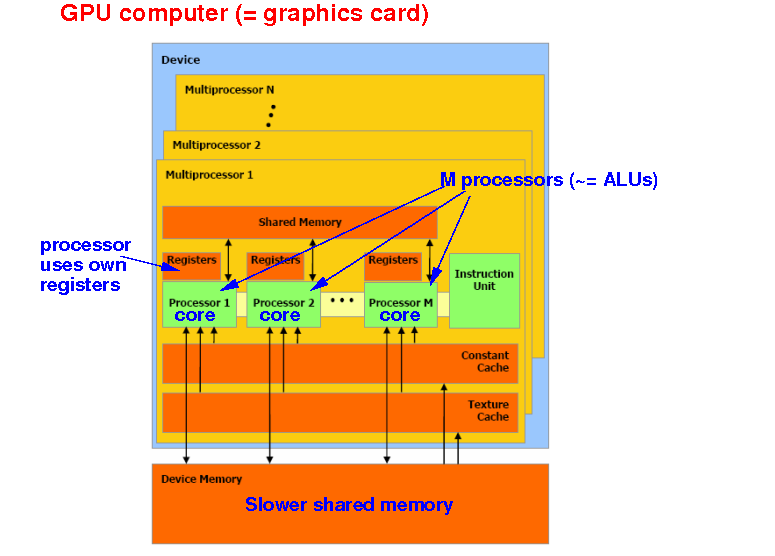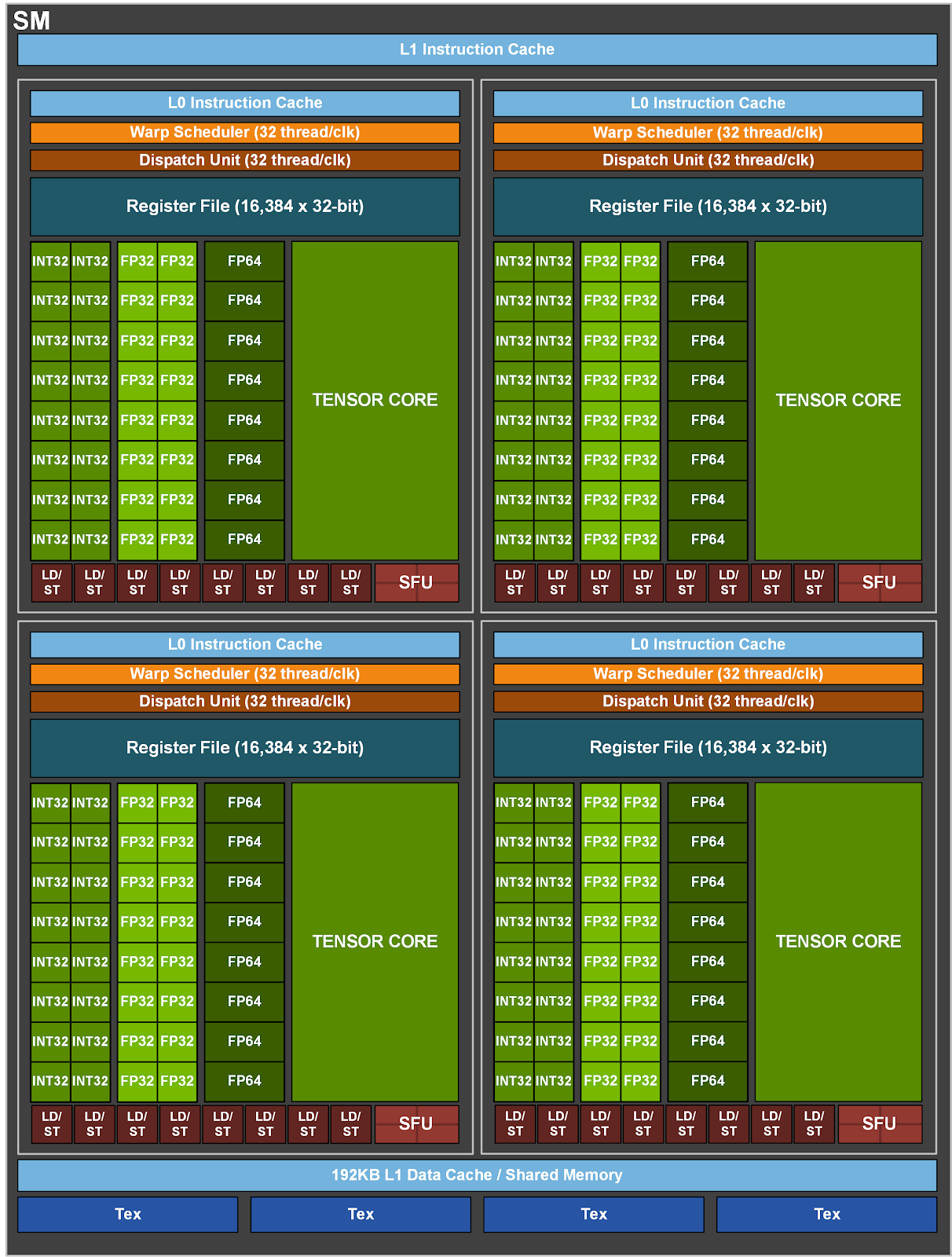This set of slides go into more details on the GPU architecture made by NVidia:

The NVidia GPU consists of N "stream" multiprocessors that can access a shared device memory:

The device memory can be accessed by all multiprocessors (i.e.: a shared memory)
Each multiprocessor has M processors (a.k.a. CUDA cores ~= ALUs):

Note:
a processor or
"CUDA core" =
floating point unit
(comparable to an ALU)
( click here
and
click here)
Each processor
or CUDA core (= ALU) uses
its own
registers
|
|
|
All cores in the same multiprocessor can also access a (faster) shared memory:

This shared memory enables threads (= programs) running on CUDA cores to communicate with one another
|


